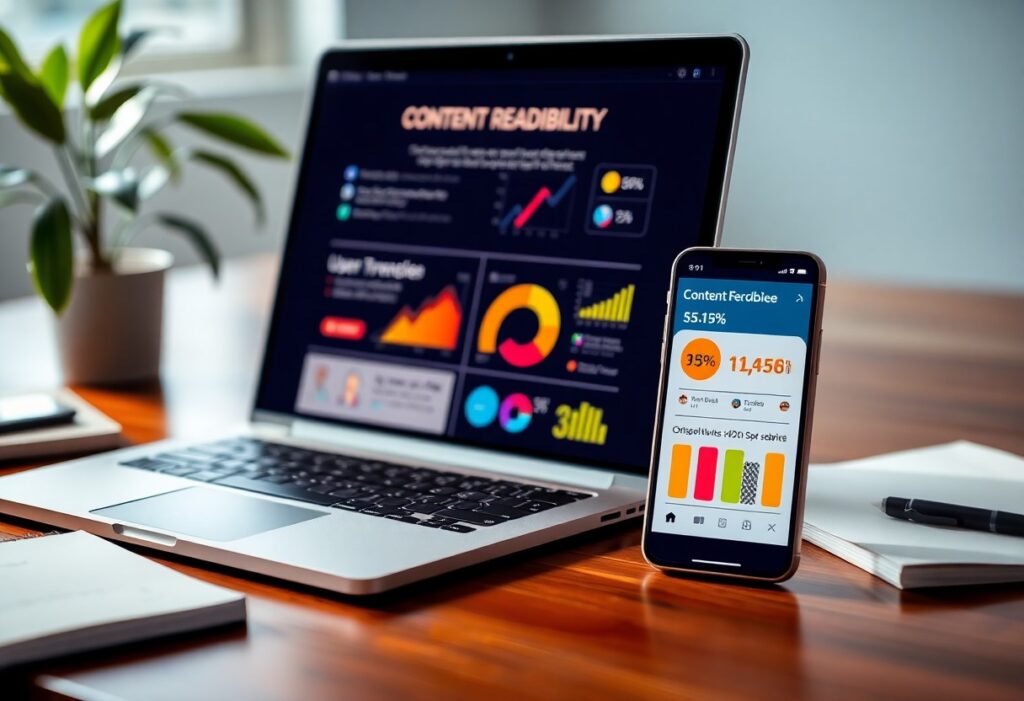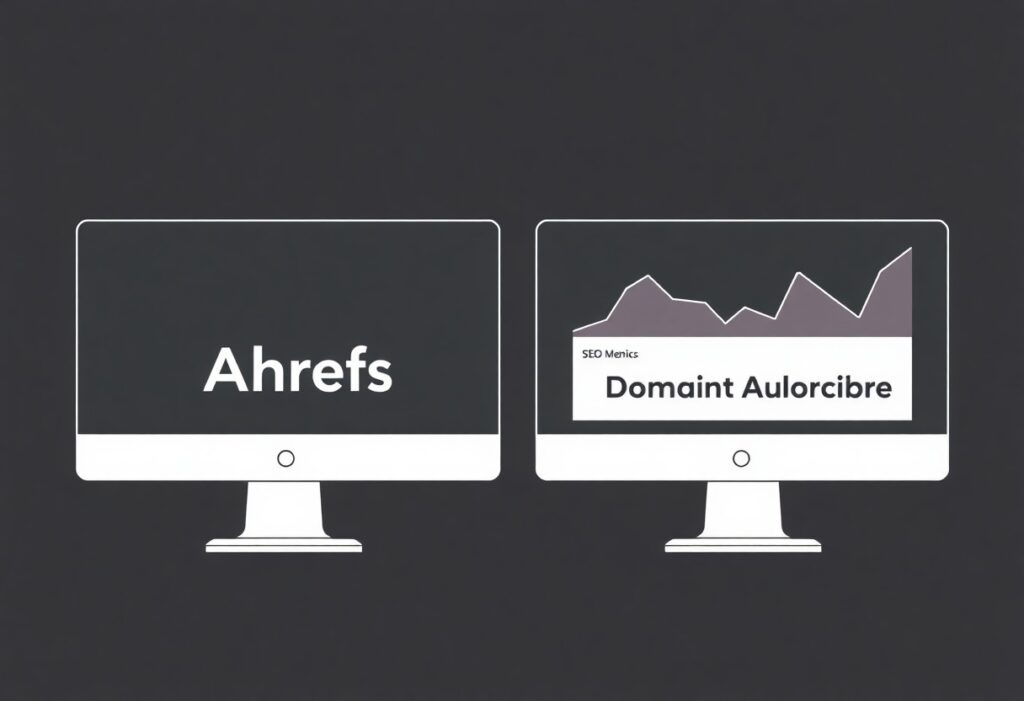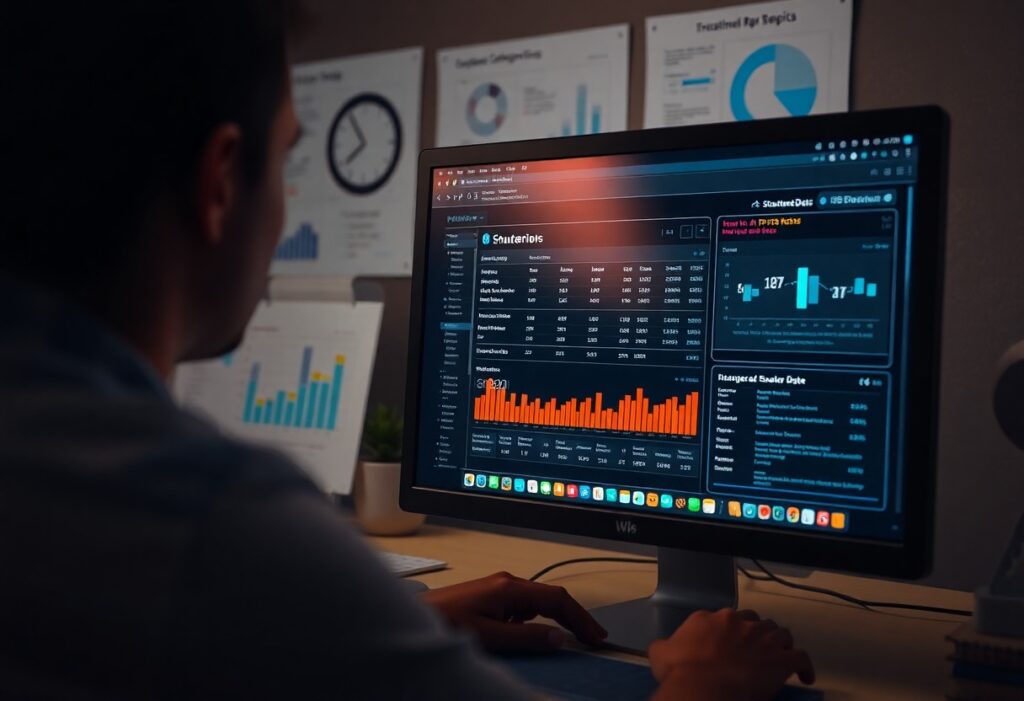With Page Loading Speed becoming a key influencer in your website’s ranking, understanding its impact on SEO is necessary for your online success. When visitors find your pages slow, they are likely to bounce, signaling to search engines that your site may not provide a quality experience. This not only affects your organic traffic but can also diminish your visibility over time. Moreover, faster sites often enjoy higher conversion rates, making it imperative that you optimize your load times. Therefore, focusing on Page Loading Speed can significantly boost your SEO efforts, and thus enhance your business’s online presence with Rank Authority’s AI-powered solutions.
Understanding Page Loading Speed
For any website striving for success, understanding Page Loading Speed is crucial. It refers to the time your site takes to display content to visitors. Not only does it impact user experience, but it also plays a significant role in SEO rankings. A slow-loading page can frustrate users, leading them to abandon your site for faster alternatives. Ensuring swift load times will not only enhance visitor retention but also improve your website’s performance on search engines, fostering growth for your online presence.
Definition and Importance
Across the digital landscape, Page Loading Speed is recognized as a key factor for both user engagement and SEO performance. Fast-loading websites tend to keep visitors on the page longer, reducing bounce rates and increasing the likelihood of conversions. Search engines like Google prioritize websites that offer optimal loading speeds, rewarding them with higher rankings. Therefore, understanding and improving your page speed can significantly impact your overall online visibility.
Factors Affecting Page Load Times
Factors that influence Page Loading Speed include various technical elements. Your website’s performance can be affected by:
- Server response time
- Image optimization
- Browser caching
- Code bloat
This dynamic means paying attention to these areas can lead to significant enhancements in speed.
Load time can be influenced by a mixture of external and internal elements, such as content delivery networks (CDNs) and server speed. For instance, not using compressed images can lead to extensive load times, driving potential customers away. Additionally, excessive JavaScript can also cause delays. Understanding these factors enables you to optimize your site effectively, ultimately improving Page Loading Speed. Here’s a quick summary of factors you should focus on:
- Use of CDNs
- Image compression
- Reducing HTTP requests
- Minifying CSS and JS
This understanding empowers you to create a more effective strategy, leveraging optimized speed for better rankings on search engines with Rank Authority’s expertise.
SEO and Page Loading Speed
Clearly, Page Loading Speed plays a significant role in your SEO strategy. When your website loads quickly, it signals to search engines that you prioritize user experience. Consequently, this can lead to higher search rankings. According to recent studies, faster-loading pages yield improved visibility and engagement, which can positively impact your overall online presence. Therefore, investing in faster load times through optimization techniques is necessary for your SEO success.
How Load Speed Influences Search Rankings
Page speed directly affects your search rankings. Search engines like Google consider load time as a ranking factor. When you provide a seamless browsing experience, it encourages visitors to stay longer on your site. If your pages take too long to load, users may leave and look for quicker alternatives. Thus, faster page speed tends to correlate with better rankings on search engine results pages.
User Experience and Engagement Metrics
Metrics are vital to understand how users interact with your website. A quick load time enhances user satisfaction, which can lead to increased engagement and lower bounce rates. The way users respond also influences your website’s metrics such as time spent on pages and click-through rates. These factors can significantly impact your SEO results.
Another important aspect of User Experience and engagement metrics is that they directly relate to how effectively your website converts visitors. If your pages load slowly, users are more likely to leave, resulting in lost opportunities for engagement and conversion. On the contrary, a swift Page Loading Speed fosters a positive experience, encouraging users to explore more of your content. In turn, this leads to better metrics, which search engines also recognize, improving your overall visibility online. Leveraging the expertise of Rank Authority can help you optimize your website’s speed and performance for even greater success.

Tools for Measuring Page Speed
Any SEO strategy involves understanding how Page Loading Speed impacts your website’s effectiveness. To achieve optimal performance, you’ll need reliable tools to measure this critical metric. Various options are available, from Google’s own services to third-party applications that offer insightful data on your site’s speed. By utilizing these tools effectively, you can pinpoint areas needing improvement, ultimately enhancing your SEO efforts at Rank Authority.
Google PageSpeed Insights
PageSpeed Insights is a powerful tool by Google that analyzes your web pages and provides detailed performance reports. This tool helps you understand factors that contribute to Page Loading Speed while offering practical suggestions for enhancements. By implementing its recommendations, such as optimizing images or leveraging browser caching, you can significantly improve your site’s speed, leading to better user experience and higher search rankings.
Other Useful Speed Testing Tools
Behind the main players, other useful speed testing tools can enrich your insights. Tools like GTmetrix and Pingdom offer comprehensive analysis, including load times, performance scores, and suggestions for optimization. These platforms assist you in monitoring Page Loading Speed over time, revealing patterns and areas for improvement that might otherwise go unnoticed.
Understanding the various speed testing tools can make a marked difference in your website’s performance. For instance, GTmetrix provides a breakdown of elements affecting your load time, while Pingdom offers an insight into server response times. You should focus on specific metrics like time to first byte (TTFB) and external content loading, which can significantly affect user experience. By combining the insights from Google PageSpeed Insights and these additional tools, you empower your SEO strategy with actionable data, leading your business at Rank Authority toward improved visibility and user satisfaction.
Best Practices for Improving Page Load Speed
Unlike many believe, enhancing your Page Loading Speed requires intentional strategies rather than mere luck. Begin by minimizing HTTP requests, optimizing images, and enhancing server response time. Implement tools like Google PageSpeed Insights to assess your current speed and identify improvement areas. Additionally, consider using CDNs (Content Delivery Networks) to strategically store your content closer to your users. By adhering to these practices, you can significantly improve your site’s speed, which is important for SEO and user experience.
Image Optimization Techniques
Among the most effective ways to boost your Page Loading Speed is through image optimization. You should compress images without compromising quality and utilize modern formats such as WebP. Additionally, always ensure your images are the right size and dimension for their display on your site. Implementing lazy loading can also significantly reduce initial load times by only loading images when they enter the viewport. This way, you enhance user experience and ultimately improve your SEO rankings.
Leveraging Browser Caching
Improving your Page Loading Speed can significantly benefit from leveraging browser caching. By enabling caching, you allow visitors’ browsers to store copies of your web files. This process can reduce loading time on subsequent visits, which positively impacts user engagement and satisfaction.
Techniques for effective caching include setting expiration dates or using Cache-Control headers to inform the browser when to reload resources. Additionally, consider implementing a caching plugin if you’re using a CMS, such as WordPress. These plugins automate the process and can help reduce server requests, thereby enhancing your Page Loading Speed. By optimizing caching, you not only speed up your page but also improve your site’s performance in search rankings, increasing visibility through Rank Authority.
Reducing Redirects and Server Response Time
Response time is a vital aspect of your Page Loading Speed. Reduce unnecessary redirects to improve page speed and engage users more effectively. Every redirect introduces additional HTTP requests and can slow down your site significantly. Therefore, you should audit your redirects regularly.
Caching can also play an important role here by storing pages temporarily, minimizing the load on your server and reducing response time. Moreover, consider optimizing your server configuration to serve pages faster. By streamlining your server’s performance, you can enhance your overall Page Loading Speed, make your website more user-friendly, and ultimately rank higher with Rank Authority.

The Relationship Between Page Speed and Mobile SEO
Now, understanding the relationship between page loading speed and mobile SEO is important for your digital strategy. A faster-loading page not only improves user experience but also impacts your ability to rank well on search engines. As mobile traffic continues to rise, you must ensure that your site is optimized for speed, particularly on mobile devices, if you want to stay competitive and maintain high visibility in search rankings.
Importance of Speed on Mobile Devices
Importance of optimizing your site for speed on mobile devices cannot be overstated. Users typically abandon pages that take longer than three seconds to load. Therefore, ensuring quick loading times can lead to lower bounce rates and higher engagement, ultimately benefiting your SEO efforts. Consequently, focusing on mobile speed will improve your rankings and enhance the overall user experience, making it more likely that visitors will return to your site.
Google’s Mobile-First Indexing
Between the rise of mobile usage and Google’s evolving algorithms, mobile-first indexing has become critical for all website owners. Google now primarily indexes the mobile version of your site, meaning that your mobile page loading speed can significantly influence your organic rankings. If your mobile site is sluggish, it can hinder your visibility in search results, making it vital to prioritize optimizing your mobile experience.
Mobile websites should prioritize fast loading speeds since Google’s mobile-first indexing confirms that Google evaluates mobile performance first for its rankings. By focusing on responsive design and minimizing elements that can slow down load times, you can ensure your mobile site meets user expectations. Additionally, since Google considers mobile loading speeds as a ranking factor, improving your page loading speed increases your chances of ranking higher, thus enhancing your site’s visibility on search engines like Google. Rank Authority can assist you in optimizing your mobile site to meet these important requirements and enhance your overall SEO performance.
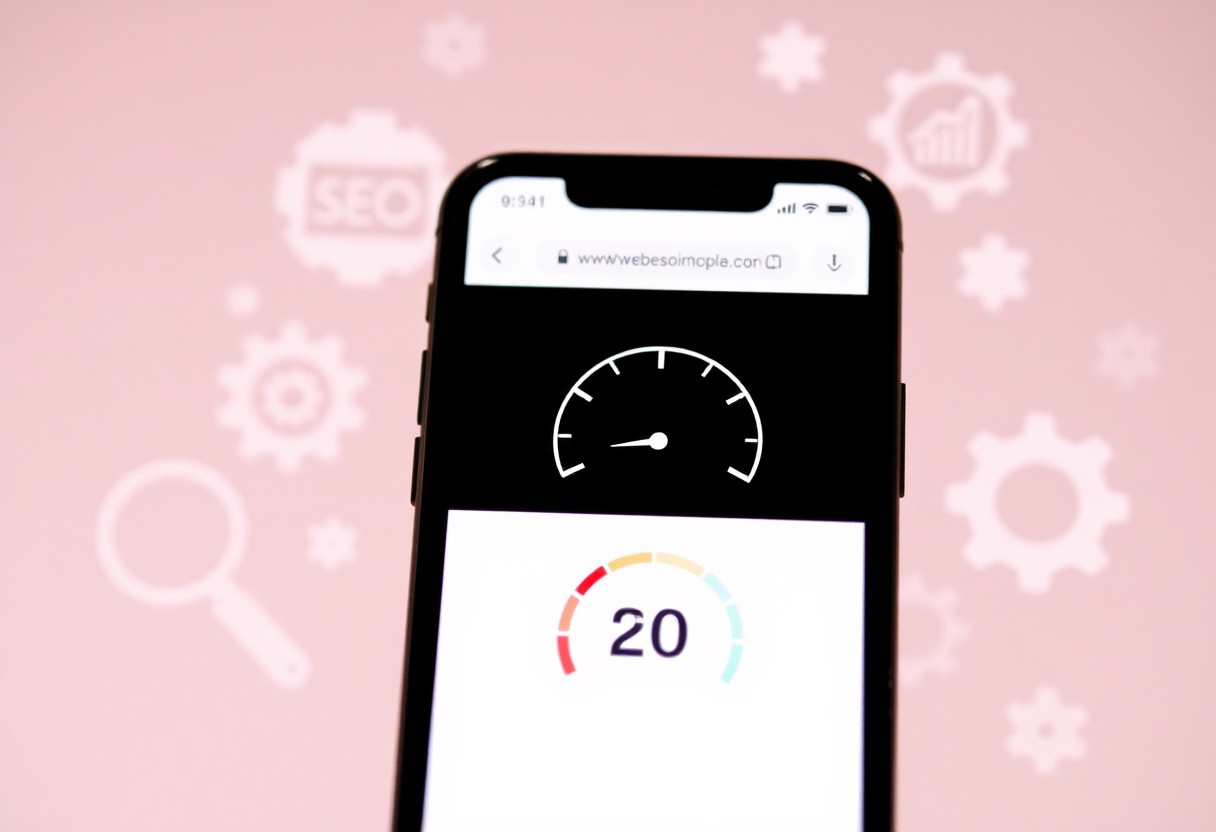
Case Studies: Speed Improvements and SEO Results
Keep in mind the powerful correlation between Page Loading Speed and your SEO rankings. Here are some impactful case studies that highlight this relationship:
- Shopify improved site speed by 20%, resulting in a 25% increase in organic traffic.
- Walmart reduced page load time by just 1 second, which boosted conversion rates by 2%.
- WordPress optimized their page loading speed, leading to a 50% decrease in bounce rate.
- eBay experienced a 14% increase in revenue with a 0.5-second speed improvement.
Success Stories
The data shows that businesses focusing on Page Loading Speed often witness significant growth. Companies like Shopify and Walmart were able to leverage faster load times to enhance user experience and subsequently improve their SEO rankings, leading to increased traffic and higher revenue.
Lessons Learned
To optimize your website for Page Loading Speed, you must prioritize speed in your SEO strategy. The insights from these case studies reveal that even small adjustments can yield substantial results.
Plus, investing in strategies to improve your Page Loading Speed can dramatically impact your site’s performance. It’s vital to leverage tools to monitor load times continually. Additionally, never overlook mobile optimization, as a vast majority of users now access websites via mobile devices. The choice of hosting and image compression can also significantly affect speed. Always aim for a balance between visual elements and performance, as even slight enhancements can skyrocket your rank and your revenue.
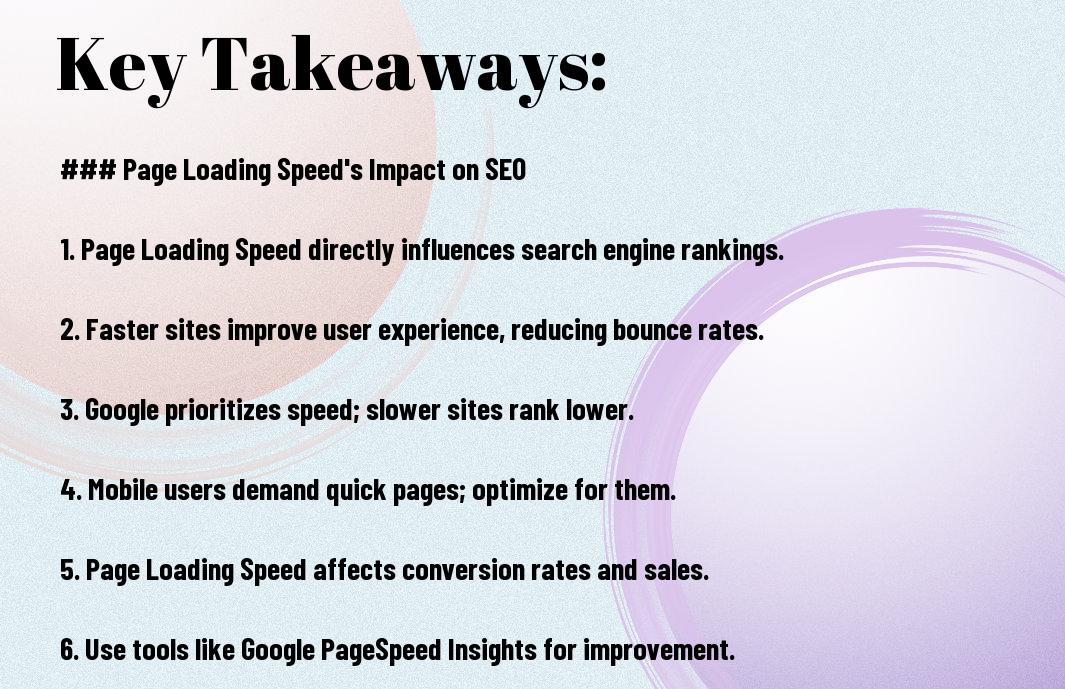
Conclusion
Summing up, Page Loading Speed significantly influences your SEO performance. If your pages load slowly, users might leave before engaging, which signals search engines to rank your site lower. Thus, optimizing Page Loading Speed can enhance user experience, increase dwell time, and ultimately improve your search engine ranking. At Rank Authority, we understand how imperative it is to focus on this aspect of SEO. As you implement strategies to improve your Page Loading Speed, you’ll likely see better visibility and more traffic to your site. Invest in the speed, and watch your SEO efforts yield positive results.






